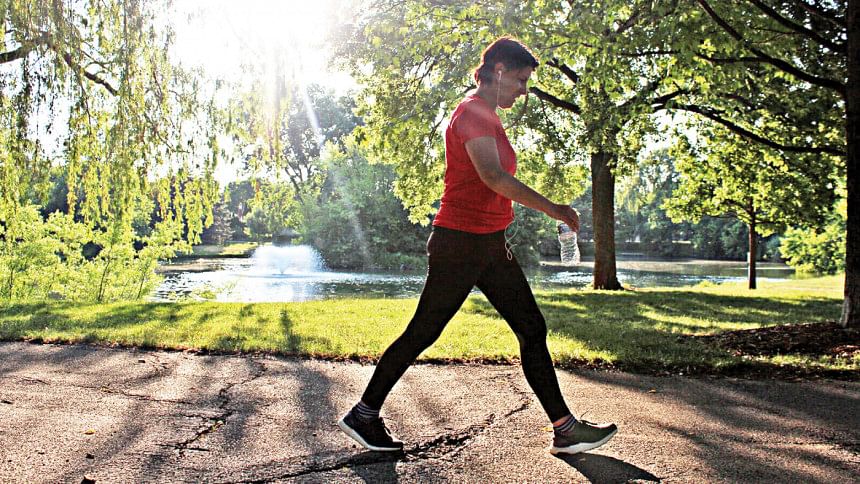Benefits of brisk walking for diabetic patients

For people with diabetes, walking is a great way to get some exercise that is both simple and effective. But we all share the belief that regular, anytime walking is beneficial for managing diabetes. However, recent studies have suggested that brisk walking may have more health benefits than walking at a normal pace.
What is brisk walking?
Physical activity that involves walking at a pace that is faster than a leisurely walk and raises the heart rate is called brisk walking. A good way to determine if you're walking at a brisk pace is to count 100 steps per minute and check if you can still talk, but not sing, during the walk.
Following are some guidelines for a brisk walk:
Warm up: Start with a 5–10-minute warm-up walk to gradually increase your heart rate and prepare your body for exercise.
Swing your arms: Swing your arms naturally to help increase your speed and use more energy.
Focus on posture: Keep your head up, relax shoulders, and maintain a straight posture to help you walk more efficiently.
Schedule your time: Identify a certain time each day and stick to it consistently.
Track your progress: Aim to walk for 30 minutes or more on most days of the week, gradually increasing the duration and intensity as you get more comfortable.
Brisk walking can treat diabetes better than regular walking for numerous reasons:
• It increases heart rate and blood flow, which improves insulin sensitivity and blood sugar control.
• Burns more calories than ordinary walking, which helps manage diabetes by keeping a healthy weight.
• Lowers blood pressure and cholesterol, lowering the risk of heart disease.
It is crucial to note that everyone's fitness level, health state, and medical problems will determine the appropriate type and intensity of exercise. Create a customised fitness plan with a doctor to manage your diabetes.
The writer is a public health specialist.
E-mail: [email protected]

 For all latest news, follow The Daily Star's Google News channel.
For all latest news, follow The Daily Star's Google News channel. 



Comments